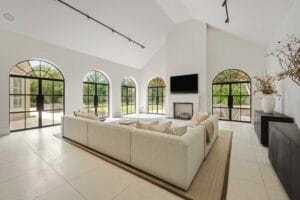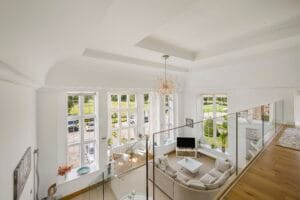Have you ever looked at a property photo and felt that something was “off,” even though the framing was perfect? Chances are that the issue wasn’t the composition. It was the colour temperature or white balance. These two elements quietly shape how potential buyers perceive a space. For professional property photographers, understanding and controlling them is one of the most important skills in creating photos that sell. Let’s explore what these terms mean and how they affect your property images.
 \
\
What Is Colour Temperature?
Colour temperature refers to the warmth or coolness of light, measured in Kelvin (K). Lower temperatures, such as 2700K, give off a warm, yellowish glow similar to traditional bulbs. Higher temperatures, around 5000–6500K, produce cooler, bluish tones that resemble daylight.


When it comes to professional property photography, colour temperature controls the overall atmosphere of a room. A kitchen with warm lighting may look cozy and inviting, while a modern office photographed with a cooler tone can appear sleek and professional. Getting the right temperature for each space ensures that your photos reflect the true feeling of the property rather than distorting it.
Imagine shooting a living room that’s bathed in warm light during sunset. If you don’t adjust colour temperature properly, the walls might look orange instead of cream. Similarly, a bathroom with daylight bulbs could appear icy and unwelcoming when photographed under incorrect settings. This is why balancing your lighting choices and camera white balance settings is crucial.

The Role of White Balance
White balance is the process of adjusting colours so that whites appear truly white. Without the right white balance, the entire image can lean too warm or too cool. Most modern cameras have automatic white balance settings, but in property photography, relying solely on auto mode can lead to inconsistent results.
When photographing interiors, the challenge often comes from mixed lighting—natural daylight through windows mixing with warm indoor lamps. This can make walls or furniture look uneven in tone. Setting a custom white balance, either through a grey card or in post-production, helps correct these colour shifts and ensures consistency across every photograph in the listing.
A consistent white balance also helps maintain the integrity of your branding. Buyers trust images that reflect reality. When your photos display true-to-life tones, the properties look more authentic and appealing both online and in brochures.

How to Get It Right
There are a few simple ways to keep your colour temperature and white balance in check:
- Use daylight-balanced bulbs when possible to minimise mixed lighting.
- Shoot in RAW format so you can fine-tune white balance later without losing quality.
- Use a grey card or colour checker at the start of each shoot to set a neutral point.
- Match your interior lighting to natural daylight by turning off extra lamps with strong yellow or orange hues.
Whether you’re photographing a cozy London flat or a new development in Manchester, the balance of colour and light can make or break a property photo. By mastering colour temperatures and white balance, you ensure every room feels natural, inviting, and ready for buyers to imagine themselves moving in.
